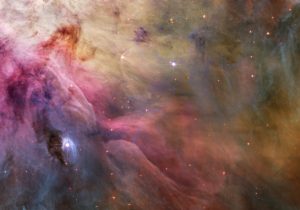Many thousands of stars vary in brightness over a period ranging from as little as a few days to over many years. They are called variable stars if they experience physical changes that cause their luminosity to alter. There are more than 30 000 known variable stars in the Milky Way. And no doubt there are many more to be discovered.

The use of “Cepheid variables” as a method to measure distances was discovered by Henrietta Leavitt (1868-1921). In 1908 and later in 1912 she published papers that described the relationship between the periods and the brightness of stars. In her words, “…there is a simple relation between the brightness of the Cepheid variables and their periods.” This is further discussed in the section: The Period of Luminosity Law.
Delta Cephei became the prototype variable star. Its magnitude ranges from 3.48 to 4.37 and is visible to the naked eye. The brightness varies over a very short period: 5 days 8 hours and 37.5 minutes. Its distance from the sun is calculated as 982 light years.
LL Orionis is a variable star in the stellar nursery of the Orion Nebula. It produces a wind more energetic than the wind from our own sun. As the fast stellar wind runs into slow moving gas a bow wave is formed, like a boat pushing its way through water.
T Tauri is a variable star and the prototype of pre-main sequence stars such as the sun. Any T Tauri type we find in the heavens is less than ten million years old. The prototype T Tauri, as its name denotes, is a member of the Constellation Taurus. It is in the process of contracting eventually to become a main sequence star.
Intrinsic variable
An intrinsic variable is a true variable star because its behaviour is controlled by internal processes. Their brightness decreases because the radiating area decreases, and vice versa. This creates a pulsating effect, alternately shrinking to dimness then expanding to brightness. Towards the end of each cycle the pressure caused by the shrinking increases the temperature, which causes an increase in brightness even before the star has started to expand. Then the increase in brightness is supplemented by the increase in surface area. Conversely, when the star has expanded to its maximum size this causes the temperature to cool and there is a slight fall off in brightness. In other words, the brightest and dimmest moments of the star do not correlate exactly with its maximum and minimum size.
Most intrinsic variables expand in volume by around 10%. For Delta Cephei, the figure is 11.9%. T Vulpeculae expands its volume by 15.2%.
Why intrinsic variables behave like this is a matter for theory. The pulsating is likely caused by doubly ionised helium. The rate, or period between minimum and maximum, is determined by the amount of helium present; in other words, by the size of the star. At a depth of a few hundred thousand kilometres below the surface of the star the ionised helium absorbs energy flux from its core. This causes the surface to expand and the temperature to fall. The drop in temperature causes a drop in the ionisation of helium causing a contraction to take place. This contraction causes an increase in the temperature and restarts the ionisation of helium…and so on, and so on…
Non-intrinsic variables
Aside from the true variable star, where its luminance varies due to internal physical changes, there are several other reasons why the apparent luminosity of a star will vary over time. For example, the brightness of a star may appear to vary because it is being orbited by a binary companion, or because it is occasionally obscured by an orbiting dust cloud. Yet another case may be where a variable star passes through a patchy nebula that attenuates its normal brightness.
Back to Top
By Nigel Benetton, science fiction author of Red Moon Burning and The Wild Sands of Rotar.
Last updated: Tuesday, 2nd March 2021